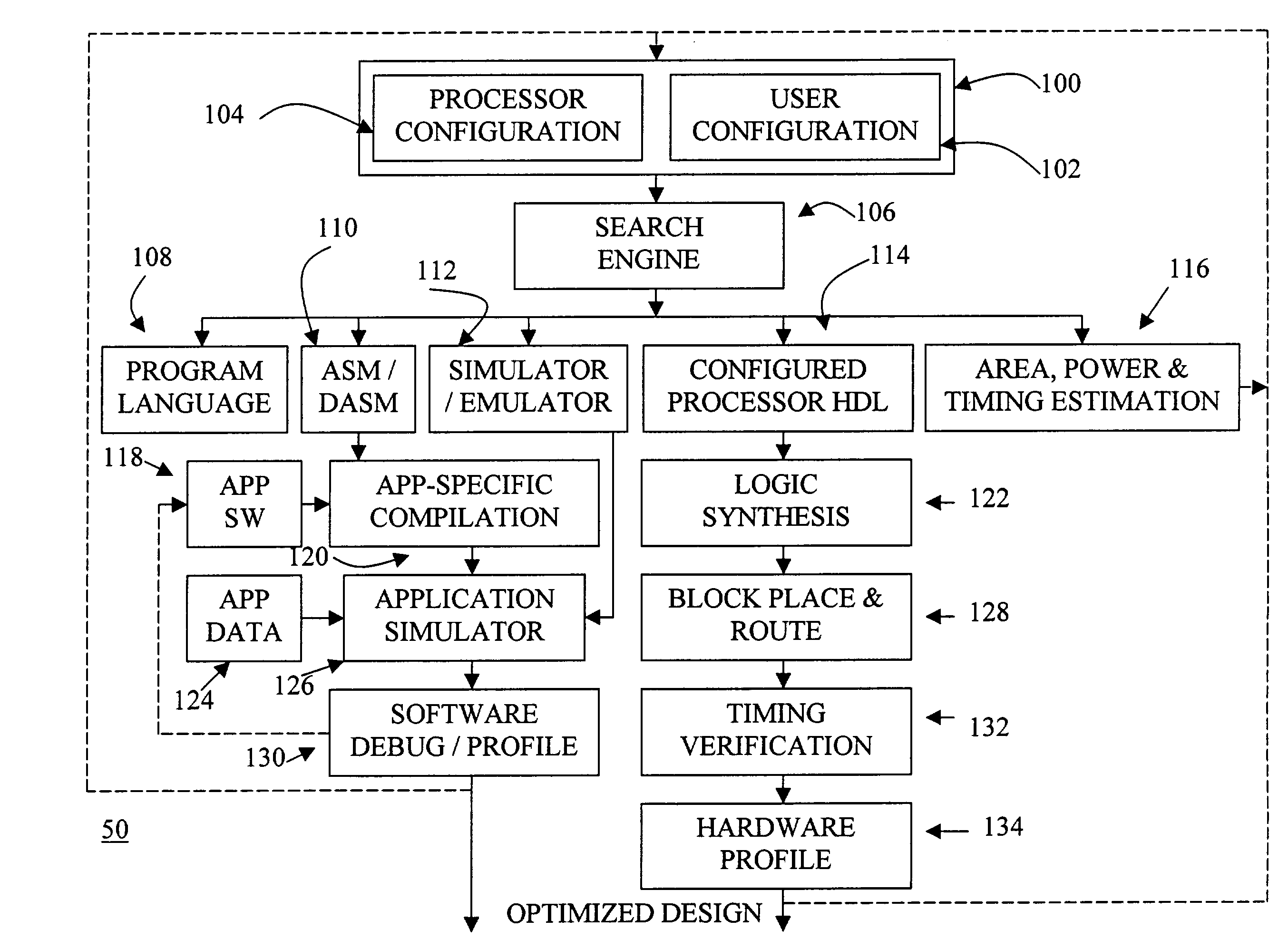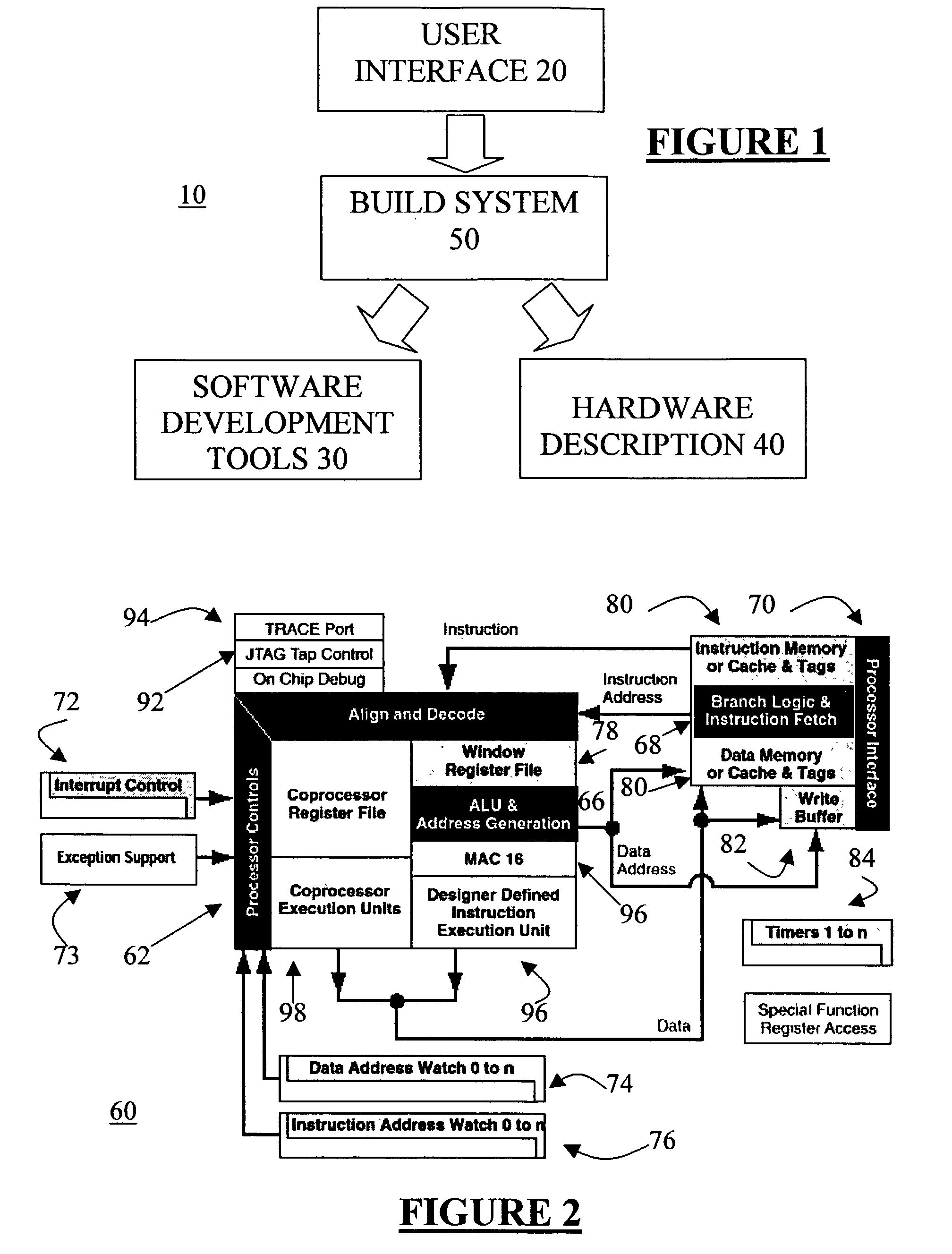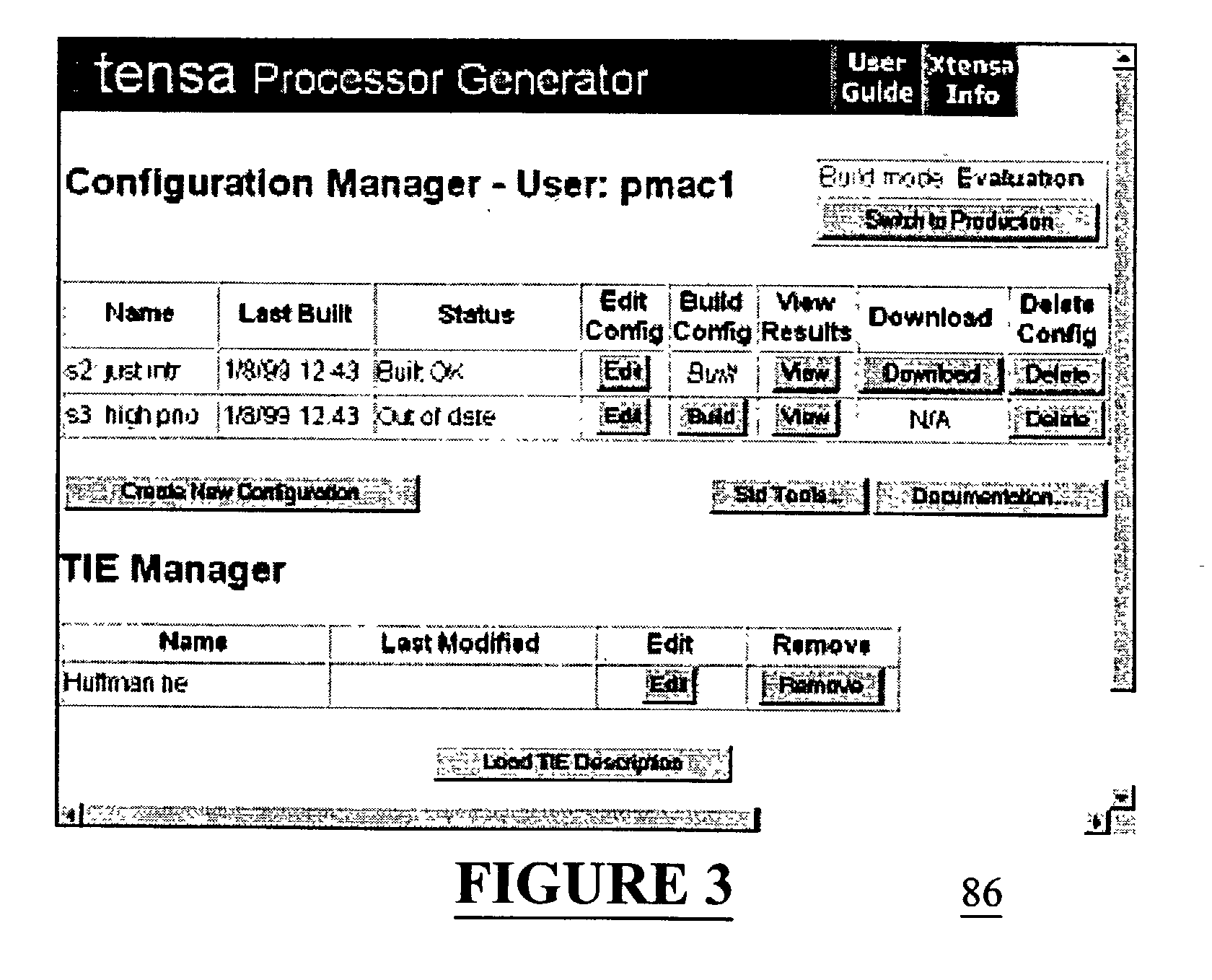Processors have traditionally been difficult to design and to modify.
As such, their suitability for a particular application is not always ideal.
However, the difficulty, and therefore the time, cost, and risk of even modifying an existing
processor design is high, and this is not typically done.
Another difficulty with prior art
processor design stems from the fact that it is not appropriate to simply design traditional processors with more features to cover all applications, because any given application only requires a particular set of features, and a processor with features not required by the application is overly costly, consumes more power and is more difficult to fabricate.
In addition it is not possible to know all of the application targets when a processor is initially designed.
Because the protocol is complex, the
processing cannot be reasonably accomplished entirely in hard-wired, e.g., combinatorial, logic, and instead a programmable processor is introduced into the
system for
protocol processing.
However, the traditional processor was probably not designed for this particular application (the application may not have even existed when the processor was designed), and there may be operations that it needs to perform that require many instructions to accomplish which could be done with one or a few instructions with additional processor logic.
Because the processor cannot easily be enhanced, many system designers do not attempt to do so, and instead choose to execute an inefficient pure-
software solution on an available general-purpose processor.
The inefficiency results in a solution that may be slower, or require more power, or be costlier (e.g., it may require a larger, more powerful processor to execute the program at sufficient speed).
However, the time to transfer data between the processor and such special-purpose hardware limits the utility of this approach to
system optimization because only fairly large units of work can be sped up enough so that the time saved by using the special-purpose hardware is greater than the additional time required to transfer data to and from the specialized hardware.
The circuitry for a computation may be rather modest, but the need for the processor to extract each bit, sequentially process it and then repack the bits adds considerable overhead.
There are a multitude of ways to code this for a conventional instruction set, but all of them require many instructions because there are many tests to be done, and in contrast with a single gate
delay for combinatorial logic, each
software implementation requires multiple processor cycles.
In terms of processor resources, this is so expensive that a 256-entry
lookup table is typically used instead of coding the process as a sequence of bit-by-bit comparisons.
However, a 256-entry
lookup table takes up significant space and can be many cycles to access as well.
For longer Huffman encodings, the table size would become prohibitive, leading to more complex and slower code.
However, these options still do not reach the level of customizability desired by system designers.
The ARC design has no facility for implementing an instruction set description language, nor does it generate
software tools specific to the configured processor.
On this point, in the prior art it is not possible to get feedback on the effect of reconfiguring the processor in these ways without taking the design through the entire mapping process.
Processors are complex logic devices with extensive internal data and control state, and the combinatorics of control and data and program make processor
verification a demanding art.
Since verification is not automated in prior art techniques, its flexibility, speed and reliability is less than optimal.
In addition, once the processor is designed and verified it is not particularly useful if it cannot be programmed easily.
It does no good to add an instruction if that instruction cannot be compiled, assembled, simulated or debugged.
The cost of
software changes associated with processor modifications and enhancements has been a major impediment to flexible processor design in the prior art.
Thus, it is seen that prior art processor design is of a level of difficulty that processors generally are not typically designed or modified for a specific application.
Moreover, in the prior art once a processor is modified, a great deal of effort is required to verify the correct operation of the processor after modification.
Finally, although prior art techniques provide for limited processor configurability, they fail to provide for the generation of
software development tools tailored for use with the configured processor.
Processors designed with prior art techniques have not done this because it is often cheaper to do something once manually than to write a tool to do it automatically and use the tool once.
 Login to View More
Login to View More  Login to View More
Login to View More 


